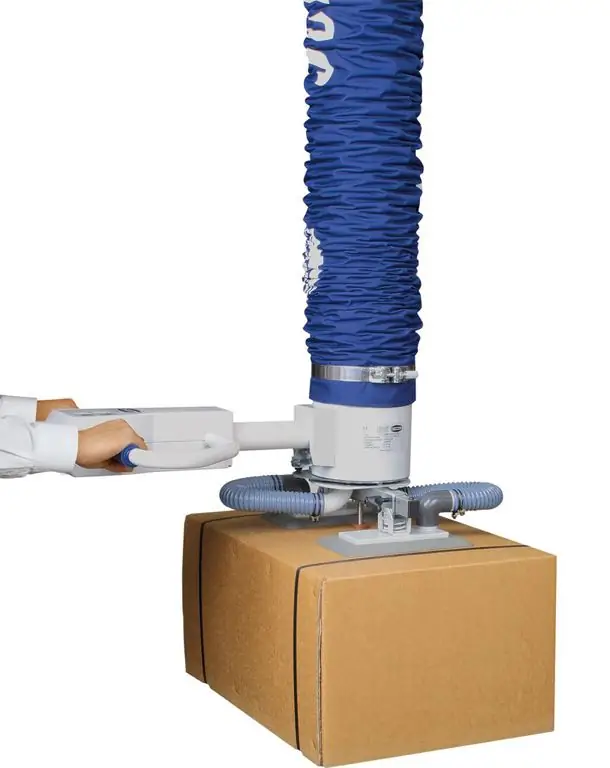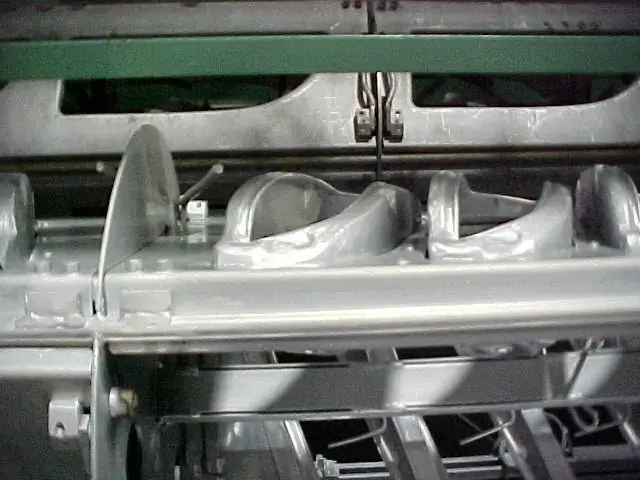2026 Author: Howard Calhoun | [email protected]. Last modified: 2025-01-24 13:10:31
Vacuum rubber today can be used to produce various cords, hoses or tubes, which have a wide range of applications in various fields and for various purposes. What is this material and where is it used? You will learn about this from our article.
Tech plate
Rubber sheets can be of two types - shaped and non-shaped. Any of these types of inserts can be used to make other products from the same material. Vacuum sheet rubber can be used to make parts such as seals for various fixed joints, gaskets that serve to eliminate friction between any moving objects. In addition, the same rubber parts can be used to reduce the vibration that occurs during the operation of some mechanical units.

Vacuum rubber, produced in the form of technical plates, has such qualities as no porosity and shrinkage of the material, it is well processed, so it is quite easy to cut or cut the material. Note that the service life of such plates is quite long, despiteon the conditions under which the rubber is used.
Vacuum plates
The production of such vacuum rubber plates is regulated by TU 38-105116-81. The resulting material is used to seal fixed joints in various units that operate under vacuum conditions. Vacuum rubber in this case is used in order to exclude the possibility of depressurization of the equipment used. It is also important to note that the thickness of the sealing material can be from 1 to 10 mm. Conventional technical plates are produced in white. Deliveries of this material are carried out in rolls with a width of 900 mm and a thickness of 1 to 6 mm. If the thickness of the material should be from 8 to 10 mm, then in this case rubber plates are supplied, which are made in the form of a square of 500 x 500 mm. The temperature at which such material can be safely used is between +8 and +70 degrees Celsius.
Hose
The use of a rubber vacuum tube or hose is now very common. Such elements are used in order to interconnect foreline pumps. The new type of models are also widely used in cases where it is necessary to carry out pumping using an extended flexible pipeline.

Vacuum rubber hoses can be used to pump reactive gas out of rooms. However, it should also be said that products of this type are not used in high-vacuum level systems. The use of PVC models is carried out onlyin systems with high performance. In addition, it must be taken into account that, when used, the pumping hose must provide an acceptable process speed. If this requirement is not observed, it may happen that self-outgassing will adversely affect the vacuum system.
Types of hose
It is important to know that there are several types of vacuum hoses. The most popular model is considered to be a single-bolt clamp power model, which is made of galvanized steel. The purpose of this material is to connect the hose in the event that the environment is characterized by increased rigidity. It is also quite common to use these types of hose:
- silicone vacuum;
- reinforced vacuum;
- pressure-vacuum;
- spiral vacuum;
- steel vacuum.

It is also worth noting another feature of such products - the transparency of the walls of PVC tubes. This feature is very convenient and is used to monitor various accumulations in the hose, which may appear under the influence of process contaminants. A similar phenomenon can be observed when the pumping process is carried out in the vacuum system from its inside.
Vacuum Cord
The most important purpose for vacuum rubber cord was its use in vacuum installations. In such systems, it is operated as a sealant. These cords can be used forambient temperature not more than +70 degrees Celsius. It is also important to understand that the use of gaskets cannot be carried out for a long time. In addition, the temperature of the working environment should not be more than +90 degrees.
There are several types of vacuum rubber cords:
- rectangular vacuum;
- seal hose from SKF 26;
- TU 38 105108 76.
GOST vacuum rubber
GOST 7338-90 applies to vulcanized and rubber-woven plates, which serve as a material for the production of rubber products. They are used as seals for fixed joints to prevent the effect of friction between two or more metal parts. These seals can also be used as single shock absorbers or as gaskets.

The technical characteristics of vacuum rubber, which apply to it according to the requirements of GOST, are as follows:
- Plates must be produced only in accordance with the requirements of GOST, as well as only according to approved technological documentation and rubber formulations.
- Rubber vacuum plates should be produced in several types, depending on their design, intended purpose, as well as the method of their production. According to these parameters, several grades of material are distinguished: TMKShch - heat and frost acid and alkali resistant, AMS - atmospheric oil resistant rubber, MBS - oil and petrol resistant vacuum rubber.
Exceptgiven the distribution of material into different grades, there is a division into classes. Currently, there are only two classes for vacuum rubber.

Classes and types of material according to GOST
The first class of rubber includes plates, the thickness of which is from 1 to 20 mm. They are intended for the production of rubber products that can be used as seals for units operating under pressure above 0.1 MPa.
The second class belongs to rubber with a material thickness of 1 to 60 mm, which, like the previous one, is used for the production of rubber products. However, parts made from this class of rubber can only be used to seal those units that will operate under pressure not higher than 0.1 MPa. By type, there are shaped and non-shaped plates.
Vacuum silicone rubber
The production of silicone rubber is carried out using silicone oil with high viscosity, as well as inorganic filler and organic peroxide, which acts as a vulcanizing agent. Silicone rubber has found its application even in electron optics and microscopy.

Besides this, silicone rubber has another name - silopran. This element is used in high vacuum technology. It is important to note that silicone rubber is not able to be as flexible as regular rubber, but this is compensated to some extent.the fact that it is able to withstand temperatures up to +150 degrees Celsius. In addition, the material endures short-term temperature fluctuations up to +260 degrees. It is important to note that some types of silicone rubber become very brittle when cooled to -60 to -90 degrees.
Recommended:
Conveyor belts: overview, description, types. Rubber conveyor belt

Conveyor belts are one of the most common and convenient means for moving a product from one point to another. They are used in many industries, ranging from household industry to heavy engineering
Vacuum lifter: characteristics and working principle

Vacuum handling systems are widely used in various industries and construction. With the help of such devices, typical manipulations with various materials within the framework of logistics and production processes are reliably and safely performed. For quick and frequent high- altitude movement, a vacuum lifter is used, which can have various performance characteristics and design
Simmental, breed of cows: photo and description, characteristics, pros and cons of the breed

The Simmental cow breed is one of the most ancient. It is versatile, has both excellent meat and dairy characteristics. Simmental bulls gain weight very quickly. Their meat has a pleasant taste, so farmers often take them for fattening. Simmental cows produce excellent fat milk, which is perfect for making cheeses. They give birth to strong calves and have stable lactation
Currency of Tanzania: nominal and actual value, possible purchases, history of creation, banknote design author, description and photo

The article tells about the national currency of the African state of Tanzania. Contains information about the history of the currency, its rate in relation to other banknotes, real value, as well as a description and interesting facts about it
Vacuum metallization - technology description, device and reviews

The article is devoted to vacuum metallization. The features of the technology, the device of the equipment used, reviews, etc. are considered

